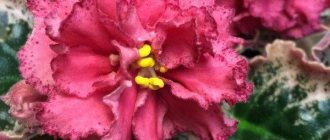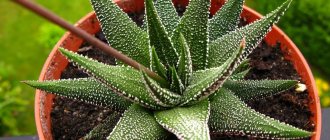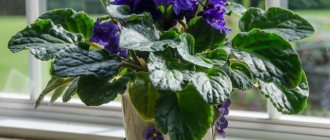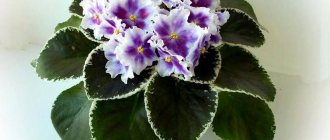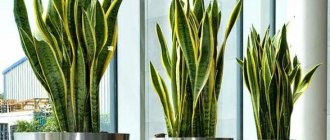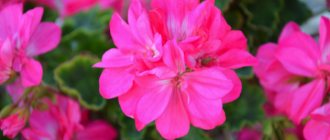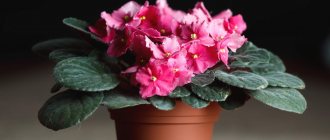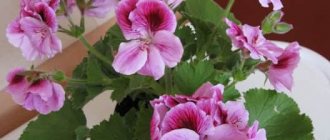Violet is loved by flower growers because it has an attractive appearance and a rich range of colors (the color depends on the variety). It does not require large investments in maintenance and is quite compact. At the same time, not everyone knows about where the birthplace of violet is, an indoor plant known throughout the world. It is used to decorate corridors, living rooms, bedrooms, and reception areas. Florists call violets as Saintpaulia (Saintpaulia), popularly it has the name Pansy (although this is only one subspecies of this plant).
Homemade violet - description and photo
The houseplant is a hybrid. Has many varieties and types. Today there are more than 30,000 varieties of flowers. This or that variety is recognized by its characteristic features - the size of flowers, leaves, color, the presence of fringe on the surface of the plant, borders, patterns - on the petals, etc. They bloom almost all year round under favorable conditions, including proper care.
To avoid problems with Saintpaulia, the soil of the flowerpot is constantly fed. Approximately 1-2 times per month. In winter, organic substances are added to the soil, and minerals in spring and autumn. Saintpaulia “does not like” direct sunlight, high temperatures, and drafts. When placing a flowerpot on a windowsill, make sure that there is no blowing from the cracks of the windows and that there is no heat coming from the radiators (during the heating season).
Professional gardeners - about the nuances of care
Planting and care have their own specifics. The plant does not like cold and reacts to it very quickly. Humidity and light are a completely different matter. But here it is important not to overdo it. For a plant such as violet, almost all species need shade if it is a hot and sunny day outside. The duration of daylight hours should be 13-14 hours.
Violet is an amazing, delicate “beauty” among other flowers. Gardeners love marsh violet, butterfly violet and some other varieties for their prolific flowering (sometimes up to 9 months). So that you can observe beautiful flowering for as long as possible, planting and care should also include sufficient lighting. To do this, creeping violet and night violet are placed on window sills that face west, east or north. Windows on the south side are also suitable, but it is advisable to place the pots on a table or shelf at the back of the room or to the side of the window.
As for temperature, the range from +18 to +24 is considered optimal. In violets, growth and reproduction deteriorate when there are changes in cold and heat in the apartment.
Pansies are rarely found in apartments and private houses (violet does not grow well in greenhouse conditions), as well as marsh violet. Preference is given to hanging varieties. They are distinguished by rather voluminous rosettes, stems falling down.
Conclusion
To summarize, I would like to emphasize that since the homeland of the violet houseplant is the tropics, when growing them in houses or apartments, it is necessary to create conditions as similar as possible to their natural habitat.
Sources
- https://sad-doma.net/houseplants/dekarativnotsvetushhie/fialka/dalekaya-rodina-komnatnogo-rasteniya-fialki-uzambarskoj.html
- https://flordecor22.ru/vidy-tsvetov/fialka-rodina-rasteniya.html
- https://komnatnie.com/fialki/uhod-fialki/raznoe-f/gde-rodina.html
- https://proklumbu.com/komnatnue/fialka/fialka_istoriya.html
- https://stroy-podskazka.ru/senpolii/sorta/rodina-komnatnoj/
- https://InfoDacha.com/kak-vybrat-gorsok-dla-fialok/
- https://ogorod-bez-hlopot.ru/rodina-fialki.html
- https://lanshaft.com/wiki/fialka-rodina-rasteniya.html
[collapse]
Violet as a houseplant
When choosing a color scheme, preference is given to white colors and light shades - for decorating children's rooms and bedrooms, bright ones - for corridors and living rooms, dark ones - to complement a certain interior style (minimalism, modern classics, loft).
Saintpaulia as a houseplant has the following advantages - a wide selection of varieties from small species with a rosette diameter of 2-3 cm, to large individuals of various tones (not only the classic purple and blue). It is bred at home by simple flowerpot lovers. An indoor flower loves light, but if there is not enough of it in an apartment or house, this is not a problem; it grows well under artificial lighting lamps.
Important! Watering is carried out in various ways, including wick. This makes it possible to leave the flowerpot for 10-15 days without additional soil moisture.
General features of the plant
Saintpaulia, or Uzambara Violet, is a herbaceous plant belonging to the Gesneriaceae family. The flower is a low-growing evergreen perennial.
Saintpaulia is characterized by a low stem with a lush rosette of leaves in the root zone. The leaf blades are leathery and have a pubescent edge. They are shaped like hearts. Often the leaf shape is unequal. The tip of the plate can be pointed or round.
The color of the leaves can be represented by rich shades of green or consist of 2 colors. Based on the color of the leaf blades, violets are differentiated by gender. In males, the base of the leaf is clean, in females it has a light spot.
The decorative value of the plant lies in its flowers. The basket consists of 5 petals and 2 stamens. It is located on a five-leaf calyx. Flowers are collected in racemose inflorescences. Depending on the species, they can have a simple or terry shape, asymmetrical petals, and varied edges. The color of the petals can be monochromatic or combine several colors. The color shades are varied. The flower diameter ranges from 2 to 4 cm.
You may be interested in:
Aubrieta: growing from seeds at home Aubrieta is a flower that should definitely decorate your garden plot or home. It is an amazing flower growing...Read more...
Common varieties
Every year its subspecies, types and hybrids become more and more numerous. Each collector has the opportunity to choose a Saintpaulia according to his individual taste preferences. There are popular varieties that are loved by everyone - ordinary flower growers, gourmet breeders. These include “Currant Dessert”, “Bride’s Bouquet”, “Jan Minuet”, “Aquamarine”. Each of them has its own flavor.
“Currant dessert” has star-shaped flowers of a rich bright purple color with a dark blue tint. The socket is large. The leaves are dark green with fringe. Beautiful, attracts attention, fits into almost any interior. This is not only a home variety, it is often used to decorate festive events.
“Bride's bouquet” is a lush, elegant variety. The white flowers are large in size and have a fleecy surface. The edges of the petals are wavy. The leaves are dark green. This variety is also used to decorate banquet halls. The finished compositions have an expensive, noble appearance.
"Yang Minuet" is a white or pale pink Saintpaulia with a bright purple border on the petals. The flowers are large, sometimes reaching 10-12 cm in diameter. The leaves are emerald green, fleecy with a wavy edge. It blooms profusely and, with proper care, does not lose its brightness. In a hot microclimate and insufficient lighting, it stretches upward and becomes covered with brown spots.
"Aquamarine" is a popular blue variety. The flowers are approximately 5-6 cm in diameter. They have a strong root system. The socket is also large and powerful. This violet produces abundant flowering. Does not like heavy watering. Flowers can be of different colors in one flowerpot - from sky blue to indigo. It does not tolerate cold weather, so it is not recommended to keep it on the balcony.
The best varieties of violets
There are three types of indoor flowers: simple, double and semi-double. In simple plant species, flower petals are arranged in one row, in semi-double and double ones - in two or three rows.
Based on the color of the petals, violets are distinguished into plain violets and fancy colors with spots and dots. Some varieties have a contrasting border around the edge of the petals. Chimeras have a line drawn down the center that is different in color from the main tone.
Among the best varieties of violets, the following Saintpaulias are noted:
- The five-petalled variety Lions Pirates Treasure has bright pink flowers with a crimson border.
- In a rosette of wavy leaf blades of the Melody Kimi variety there is a bouquet of delicate flowers with two blue petals on top and white petals below.
- Similar to the coral-colored stars of Austin's Smile violets.
- Saintpaulia Admiral is widespread among gardeners. Cornflower blue semi-double bell flowers with wavy edges are reminiscent of the sea.
- Of the two-color species, LE-Tiger can be noted - pink-coral petals, quite large, with a white spot in the middle decorate the plant.
- Of the chimeras, the violet Solitaire is original. It has blurry purple stripes coming out of its yellow center. Against the background of snow-white petals, everything looks very harmonious.
- The Ming Dynasty corrugated cups are snow-white, edged with lilac stripes. In a rosette of variegated leaves they look decorative.
- The variety Natalis Estravagante is attractive not only for the lace of white-pink flowers with a greenish border, but also for the variegation of the leaves.
- The complex, unusual coloring of the Chimpansy violet combines the bright pink tones of semi-double star-petals with strokes and swirls of blue on them.
The variety of types and varieties of flowers allows you to choose those whose color matches the taste and mood of the owner.
Homeland of indoor violet. Origin of the flower
For the first time, Saintpaulia (Gesneriaceae family) was discovered on the territory of the Uzambara Mountains. Therefore, East Africa is considered its homeland. Governor Saint-Paul found and was impressed by the beautiful appearance of the unknown plant. He was walking at the foot of the mountains and accidentally came across a place where violets bloomed profusely. Hence the name “Saintpaulia” (in honor of the governor) and “Uzambarskaya” (from the location).
Saint-Paul was well versed in flowers, as his father was a famous plant breeder. The governor drew the pope's attention to an unknown plant. My father also liked it, and he decided to show Saintpaulia to the whole world. He brought it to the annual international flower exhibition in 1983 in Belgium. Saintpaulia caused a sensation among collectors. After the exhibition, the seeds spread throughout the globe. Breeders began to experiment and create new varieties and hybrids, using the eastern type as a basis.
Origin of violet: history and where it comes from
Violet is an annual or perennial herbaceous plant with a short stem on which strongly pubescent leaves collected in a rosette are held. They take the shape of an oval, circle or heart. The edge of the leaves can be smooth or wavy, depending on the type of flower.
Breeders have developed a large number of varieties differing in flower size and color. In different varieties, the size of the rosette ranges from seven to forty centimeters. The violet root system is thin and creeping.
The abundance of violet species is the merit of breeders
Flowers, double or simple, are collected on stalks in several pieces. They come in different colors: blue, pink, white, burgundy, light blue.
Violet blooms for nine months and does not depend on the time of year.
Violet flowers contain anthocyanin glycosides and essential oils. Thanks to these substances, the flowers of the plant are useful in the treatment of eczema, urticaria, and lichen. The violet fruit is a capsule with valves.
The birthplace of the flower, the nature of the violet
The birthplace of the flower is Africa. It is difficult to name a specific country. The plant grows in nature with temperate weather. It is most often found in North America, Japan and the Andes. Some varieties grow in the subtropics of Brazil, tropical and South Africa.
The violet is found on the Australian continent, New Zealand and the Sandwich Islands. open or slightly shaded areas with a moderately humid climate as their habitat
Wild violets grow in Europe, in southern Siberia. Forest ones are found in forest clearings in deciduous forests.
Botanist Herman Wendland recorded violet as a separate genus. She received the name Saintpaulia from him in honor of Baron Saint-Paul, who was the president of the Dendrological Society of Germany. It was he who gave Wendland the seeds of the plant.
In Russian, violet is called “Saintpaulia”, freely interpreting the Latin name .
Baron Adalbert Saint-Paul discovered the flower in East Africa among stones during a walk with his lover in 1892. He noticed blue flowers with a yellowish center on the stone, which were located in the crevice.
The Baron sent the flower to his father Ulrich von Saint-Paul, who was collecting a collection of rare plants. In 1893, the plant family was identified: Gesneriaceae. In the same year, violets were shown at the exhibition for the first time. She was described in magazines. In Germany, it was called "Uzambara" after the name of the area in Tanzania , where it was discovered.
Where does it grow? A country where you can find it in natural conditions
The Uzambara type of Saintpaulia is considered native and classic. It is a pale blue violet with a medium-sized rosette and light green leaves. Initially, the blossoming buds had no smell. Nowadays, types have been bred whose flowers have a characteristic pleasant aroma.
Since its homeland is in warm regions, the plant loves the sun (not heat) and dies at low temperatures. It is optimal when Saintpaulia has a little shadow, as, for example, a mountain provides it. Saintpaulia grows under natural conditions in southern Africa, Brazil, and Australia. And it is bred in almost all civilized countries of the world, despite its origin.
Attention! Room temperature conditions are optimal and favorable for growing violets in flowerpots, which is why flower growers are so attracted to flowers.
On the street, Saintpaulia is bred in areas with a tropical climate. In the CIS countries, flowerpots decorate the garden area in the summer. As soon as the air temperature drops below 17-18 C, they are removed into the house.
Is it allowed to grow several Saintpaulias in one pot?
Gardeners often wonder whether different varieties of violets can grow in the same pot. In principle, this is acceptable. The main thing is that the sizes of the rosette varieties are approximately the same. However, some gardeners do not recommend planting crops in one flowerpot. After all, if you plan to cultivate two violets in a pot, then you will need to choose a spacious container. And Saintpaulia prefers close quarters. In a large container, all the energy of the violets will be spent on the development of the root system. As a result, both plants will not bloom.
Violet looks very delicate and beautiful. It can often be found on the window sills of city apartments and private houses. But to get a good symmetrical plant with abundant flowering, you need to choose a pot that is ideal in size and made of good material. You can actually make a flowerpot yourself from clay, plaster, or weave it from plant branches. See article: .
Wikipedia – interesting facts
In the free access encyclopedia you can study all the detailed information about Saintpaulias - classification, history of origin and breeding of varieties, how to grow and care for them, where they are used, etc. There are many interesting facts about pansies, some of them are:
- The inhabitants of ancient Greece used Saintpaulia in divine rites (the flower symbolized both joy and sadness).
- Also among the Greeks, when children turned 3 years old, this event was celebrated magnificently; wreaths with Saintpaulias were put on the children (this symbolized the transition from infancy to the next stage of development).
- Louis XVI (King of France) and Turgenev (Russian writer) had a special relationship with violets. At one time, the poet, while undergoing treatment in Wiesbaden together with Balashova, got up every morning for a walk and collected a bouquet for his beloved.
- Residents of Germany have a separate holiday for Saintpaulia. It is celebrated at the beginning of spring (first Sunday).
- The aroma of Parma violet is the basic basis for the creation of the famous perfume “Vera Viollet”. They were first released in 1870. Their production continues to this day.
- With the help of violets, some minerals are found. In Europe, large deposits of zinc were discovered where large pansy flowers grew abundantly.
Important! The plant is used not only for aesthetic purposes.
Flowers are used in cooking and medicine. Petals of certain varieties are dried and then used as a seasoning. Flowers are also used to produce medicines. With their help, it is possible to successfully treat diseases of the gastrointestinal tract, cardiovascular system, upper respiratory tract, etc.
The most extraordinary story about the origin of Saintpaulia
One of the main questions of our article is as follows: when and under what circumstances was the plant discovered? Baron Walter von Saint-Paul, who was the governor of an African state, knew exactly what a violet looked like. While exploring the Ulugur and Uzambara mountains, the researcher met a flower that captivated him with its beauty. The sky-blue radiance surprised Saint-Paul so much that he immediately wrote up a description of it and sent it to his father, a well-known orchid collector at that time.
We also recommend reading
At first, the night violet was “enlisted in the ranks” of the Gesneriaceae family.
The official year of birth of the flower was 1893, when the plant was described in detail and officially presented at an international exhibition.
Having earned recognition, the violet, whose homeland was the African continent, almost instantly adorned window sills in most countries of the world.
The world around us and legends
Due to their unusual beauty, people have long considered violets to be a divine message. There are many legends and mythical stories about them. Flowers were used in spiritual rituals, believing that they were endowed with unearthly power.
The legend of Adam tells about Viola (as one of the garden varieties is usually called). She was considered the tears of the first man on earth. Adam was expelled from paradise to the island of Ceylon. It was there that he lived and constantly prayed to God for forgiveness. When grace was sent to him, his tears flowed in a stream. In this place, beautiful flowers of extraordinary beauty grew, later called forest violets.
The legend of Zeus also brings to mind Viola. The daughter of Atlas fell out of favor with the Sun God. He decided to punish the girl by scorching her with burning rays. While running away, she decided to ask Zeus for protection so that he could find a secluded place for her. He turned her into Viola and hid her in his heavenly forests. She had the opportunity to appear, blossoming every year, delighting the inhabitants of Olympus. The daughter of Zeus loved to walk here. One day she was kidnapped by Pluto, and in her place was left a beautiful bouquet of forest flowers.
The Greeks used Viola as a symbol of chastity. It was used to decorate places where special events were held. Also, the inhabitants of Greece often used Saintpaulia for incense. In Rome, Viola was popular as an ingredient for making wine. Throughout Europe, Saintpaulia was used to declare love. Sending a violet to a girl without words was considered a revelation.
Viola was also loved by the warriors of the Zaporozhye Sich. The Cossacks dried its roots and made amulets from them. It was believed that they protected warriors from arrows, swords, wounds and gave vital energy. The Cossacks used Viola as a medicinal remedy, preparing decoctions and infusions from it.
China distinguished itself in its own way. Designers from the Middle Kingdom created a collection of dresses that smelled like pansies. Moreover, the smell does not disappear even after several washes with detergent. The dresses are created in a free style, personifying airiness, youth, and radiance.
Interesting! Saintpaulia seeds were used for space experiments by American scientists. The goal of the study was to determine how plant genetics change after exposure to conditions of weightlessness and cosmic radiation. The result is that a new species has emerged.
fairy flower
The homemade violet has become a truly fabulous flower. Look at the variety of colors, shapes, sizes! For every taste. There are large violets with huge flowers, there are mini and micro violets growing in a small glass, hanging violets with hanging branches, and trailer violets in the form of a blooming ball. And what a variety of shapes and colors of flowers! Simple, terry, all kinds of colors, multi-colored, speckled, so-called fantasy varieties, striped chimeras! And more and more new varieties appear.
Popularity house
The ash violet is only growing. She won the hearts of millions of people all over the Earth. House violet blooms successfully under artificial lighting all year round in an apartment, which is especially pleasant in the conditions of the polar night in the far north. Industrial production of homemade violets has been established, and special varieties have been bred for this. Societies are being created that unite violet collectors in various countries, exhibitions and auctions of Saintpaulia are held.
Conditions for growing violets are close to natural
To grow flowers at home and on your own, you don’t have to put in much effort. The main thing is to carefully monitor the condition of the plant, feed it on time, prune it, water it, and protect it from the sun. Favorable growing conditions:
- Alternating wick and top irrigation (thus simulating recharge of the soil from groundwater or rain).
- For feeding, fertilizers are selected in liquid or granular form (for young individuals - nitrogen, for flowering - potassium-phosphate).
- Room mode - favorable indoor air temperature 18-22C, humidity - 65-80% (a very important condition), natural lighting, not too bright (in nature they are protected by shade from bushes and trees).
- Loosening the soil several times a month (providing the roots with access to oxygen).
- Land for planting is used from forests or bought in specialized stores (it contains humus and sand).
- Pots or containers are changed as the flower grows (damaged or infected parts are removed).
Important! Saintpaulia is sensitive to various pests - bacteria, fungi, etc. Most often it is infected with a nematode.
The bacterium attacks the root system. This pest reproduces well in forest soil. Therefore, when planting a plant, it is better to use ready-made soil from the store, which has undergone purification treatment, but remains rich in minerals. Another dangerous pest is thrips. These are small insects that breed on violet leaves. You can protect flowers from death by promptly removing damaged elements. Therefore, you need to ensure that the leaves and petals do not change their color to yellow, brown or black, do not become covered with spots, etc.
Basics of caring for homemade violets: what microclimate to create
Proper care requires some knowledge and skills, as well as a little experience, which is acquired over time.
Caring for violets does not require special knowledge
The right place for Saintpaulia: lighting and temperature
The violet feels comfortable on the windowsills of windows of eastern or western orientation. When placed near southern windows, the plant is shaded so that the sultry rays of the sun do not burn the delicate leaves. She needs good lighting .
- At midday in the warm season, you can disperse the rays using a mosquito net or curtain.
- Violets grow at home at a temperature of twenty-one to twenty-two degrees.
- During severe frosts in winter and hot days in summer, it usually does not bloom flowers.
Watering and humidity to grow
Violets are watered two to three times a week. The exact frequency of watering depends on humidity, time of year and soil. They are watered as the top layer of soil dries out. In summer it dries out faster, so the plant is watered more often. In winter, the frequency of watering is reduced : the soil is moistened only after the top layer of the substrate has completely dried.
Violet will tolerate a slight drought more easily than overwatering, so you should not overwater it. Usually, after a while, the gardener intuitively senses when the flower needs to be watered.
Transplanting Saintpaulia
In what pot and when should I transplant Saintpaulia?
It is advisable to replant mature Saintpaulias into fresh soil mixture every year. After all, their root system is located in a small volume of soil, which over time loses structure and nutritional value. They are usually replanted in the spring, but if they are growing in artificial light, this can be done at any time of the year.
The most common mistake when growing Saintpaulias is using pots that are too large. Let us remind you that pots are distinguished by numbers, which correspond to the diameter of the pot at the top. For young plants that have just been separated from the mother leaf, small pots (No. 5 or 6) are sufficient. In the future, when the plants grow up, they can be transplanted into containers No. 7 or 8. The maximum pot size for the largest adult specimens is No. 9 or 11. A container that is too spacious can often lead to rotting of the roots.
Before use, new clay pots should be soaked in hot water for 30-40 minutes, and then allowed to cool and dry. If this is not done, then after planting the walls of the pots will absorb too much water to the detriment of the plant. Sometimes you have to reuse containers whose edges are coated with salt. Therefore, they must be thoroughly washed with a hard sponge in hot water, and the deposits must be removed with a brush or a blunt knife.
Proper drainage during transplantation
When transplanting Saintpaulia, first of all, you should pay attention to drainage. The drainage layer, which is poured on top of the shard covering the bottom hole, serves to drain excess water from the lower layers of the earth. It promotes additional air access to the roots, prevents compaction of the lower part of the earthen ball, and is especially important when planting in plastic containers.
Typically, drainage takes up 1/5 of the pot's volume. The condition of the earthen mixture and its acidity largely depend on its quality. It is better to use crushed shards from clay pots as a drainage layer; they do not change the acidity of the substrate. You can use well-washed coarse sand (fraction size 1-2.5 mm). Small granules of expanded clay, a light brown building material, are also suitable; larger granules should be crushed. Expanded clay drainage needs to be changed every year, as over time compounds that are toxic to Saintpaulias accumulate in it.
The most commonly used synthetic materials are polystyrene (artificial resin) and polystyrene crumbs. The latter is crushed by hand into crumbs (5-12 mm). Granular polyethylene, a chemically inert, lightweight, durable synthetic material (grain size 3-5 mm), is more difficult to access.
Saintpaulia, or Usambara violet © Suttons Seeds
Plant materials: pine bark chips, nut shells, cork, crushed pine cones, etc. can be used for drainage, taking into account that they usually acidify the soil and do not always give a positive result. With such drainage, it is advisable to add small pieces of charcoal to the volume. Gravel and crushed granite usually contain particles that alkalize the substrate, so they can be used in acidic soils. Brick chips strongly alkalize the soil, so they are not recommended for drainage.
When planting Saintpaulia in small pots (5-7 cm), it is enough to cover the drainage hole with a clay shard. The rest of the volume is occupied by the earthen mixture. In larger containers (8-11 cm), a drainage layer (1.5-2 cm) is poured on top of the shard (which is placed with the concave side up) and several pieces of charcoal about 0.5 cm in size are placed on it (charcoal adsorbs harmful gases) .
Saintpaulia planting depth
The planting depth of Saintpaulia is of great importance. At the correct depth, the petioles of the lower leaves should be just above the surface of the ground or lightly touching it. If the planted plant is unstable, you can additionally place a layer of sphagnum moss about 1 cm thick on the surface of the ground. In this case, it may slightly cover the petioles of the lower leaves. Plants planted too high often turn out to be unstable, which slows down their growth and development.
When watering plants that are planted too deeply, soil particles fall into the center of the outlet, polluting it. Young leaves at the growth point are deformed, their development slows down. Often, in Saintpaulias that are too deep, the growing point rots, “rust” appears on the central young leaves, the leaves die, the stem rots, and the plant dies.
Violets - leaf propagation, rules, features, nuances
With the help of seeds, these flowers are bred by flower growers who develop new varieties.
At home, Uzumbara violet can propagate by shoots or leaves - so-called cuttings. It’s very easy to plant a shoot or leaf that has taken root in a pot of moist soil, and after a while you’ll get an adult plant.
Propagation of violets by leaves, at home, is carried out as follows: the leaves are picked immediately under the flower stems or the leaves of the second tier. Such leaves should be grown, formed, and have a stem of 3-4 centimeters. They are cut at an angle with a knife with a thin blade and placed in settled water. All leaves require their own space - so each one has its own container of water. It is not customary to replace the water entirely, but you will need to add it when the level in the container decreases.
After the roots appear, the leaves are planted in pots with a slope, while making sure that the leaf does not lie on wet ground (to do this, you can put something under it, for example, a piece of plastic, a small stone). The soil around the leaf is not compacted, but left loose. From such a leaf small young leaves will grow, which will gradually form a rosette. When young leaves begin to grow, the planted leaf can be trimmed. Typically, several small plants grow in a pot. Then they are divided and placed in different pots.
Types of Saintpaulia (Usambara violet)
Ampelous violet
African night
AE-Amur Elite
Dean's Aquarius
Cherries'N'Cream - Sorano
AN Rio Rita
Blue fog
Mandy
DEO-Marzipan
Princess K'Rei
wild Cherry
Plumberry Glow
EK-Black Pearl
Indoor Saintpaulia: difficulties in care, recommendations
From time to time it is necessary to wash off the dust from the leaves. The violet is given a summer shower, protecting the growing point and the ground from water. Then the flower is kept in the shade for 4 hours until completely dry. The shower prevents pests.
To ensure that the violet is always beautiful and lush, remove dry and yellowed leaves in a timely manner.
- Excess light - the rosette becomes flat, the leaves curl, the peduncle decreases in size, and flowering stops.
- With insufficient diffused sunlight, the petioles and peduncle lengthen, and the leaves stretch upward.
- If the leaves rise up, the lighting is increased; when they roll over the edge of the pot, the amount of light is reduced.
- The leaves turn yellow and spots appear - excess fertilizer or insufficient watering.
Diseases and pests
If small red dots appear on the leaves, their premature wilting and poor development, or the color of the leaf blade changes to yellow, it is worth checking the flower for pests. Violets are affected by fungal diseases and thrips (insects).
- Powdery mildew . It is expressed by the formation of a white fluffy coating on the leaf blades and stem of the plant. The fungus occurs due to improper crop conditions and excess nitrogen in the soil.
- Botrytis (gray rot). It appears as mold and brown spots and easily infects neighboring crops. Fungal spores are able to penetrate deep into the soil, which makes it impossible to use it further. For the development of the fungus, conditions with high humidity, insufficient lighting, and sudden temperature changes during this period serve.
- Late blight. Change in leaf color to brown, loss of turgor. The disease is also caused by a fungus and can infect the soil. The cause is too wet soil.
Uzambara violet is affected by insects: aphids, mites, thrips, whiteflies, scale insects.
To reduce the risk of these ailments, it is recommended to periodically perform a full check of the plant and monitor the conditions of the crop. If infection occurs, purchase special preparations from a gardening store and follow the manufacturer’s recommendations.
To learn how to care for violets to bloom and delight, see the following video.
Saintpaulia in indoor floriculture [edit | edit code ]
Varieties
Saintpaulia has long been used in indoor floriculture, and to date many varieties of this plant have been developed. Most of them are hybrids of Saintpaulia ionantha
), as well as interspecific hybrids
of Saintpaulia ionantha
and some other Saintpaulia species (
Saintpaulia magungensis
,
Saintpaulia comfusa
).
In floriculture, the general name Saintpaulia hybrid
(
Saintpaulia hybr>) is sometimes applied to all Saintpaulia hybrids.
Saintpaulia varieties are divided into several groups, primarily according to the color and shape of the flowers and their type. According to this principle, classic, star-shaped, fancy, and bordered Saintpaulias are distinguished and Saintpaulia "chimeras".
By the type of leaves, plants are primarily distinguished as “boys” (English boy) and “girls” (English girl). The “girl” plants have a light spot on the upper side at the base of the leaf, while the “boy” varieties have completely green leaves. The most common are Saintpaulias with rosettes, the diameter of which varies from 20 to 40 cm. There are giant varieties (diameter from 40 to 60 cm), miniatures (up to 15 cm) and even so-called microminiatures; in the latter plants the diameter of the rosettes is only about 6 cm.
Modern varieties often convey varietal characteristics much worse than varieties of earlier selection, for example, the selection of B. M. Makuni
- Saintpaulia 'Chimera Monique' - the flowers of this variety have lilac petals with a white border.
- Saintpaulia 'Chimera Myrthe' - The flowers of this variety have rose-red petals with a white edge.
- Saintpaulia 'Ramona' is a variety with deep pink double flowers, in the center of which yellow anthers look impressive.
- Saintpaulia 'Nada' is a white flowered variety.
Agricultural technology
Pots for Saintpaulias should not be too large.
The diameter of the pot should be three times smaller than the diameter of the violet rosette. >
It is best to place pots on windows with western or eastern orientation. To ensure that the plant is illuminated from all sides, it is periodically rotated. To ensure Saintpaulia blooms all year round, you can use artificial lighting. Fluorescent lamps are best suited for this purpose. The optimal temperature is 20-22 °C, without sudden fluctuations. Saintpaulias are afraid of cold drafts and direct sunlight.
As soil, you can use purchased soil for Saintpaulia or a mixture of leaf, turf, coniferous and peat soil in a ratio of 3:2:1:1 with the addition of raising agents - perlite, vermiculite, coarse river sand and chopped sphagnum.
Water the Saintpaulia as the earthen clod dries. The soil should be constantly moist, but care must be taken to ensure that moisture does not stagnate in the roots. It is better to water along the edge of the pot so that water does not get on the leaves. Under no circumstances should you water Saintpaulia with cold water. In indoor floriculture, the wick watering method is also common.
Top dressing
Complex mineral fertilizers are applied regularly during the growth and flowering period, approximately once every 2 weeks.
Air humidity
must be at least 50%. It is not advisable to spray plants. This can only be done during flowering, and the water should be sprayed very finely. You can place the pot in a tray of damp pebbles or place it among other plants.
Due to the decrease in daylight hours in winter, it is better to use additional artificial lighting. Its duration should be 11-13 hours a day. At temperatures below 15 °C, lighting does not bring tangible results - all processes in plants slow down. In winter, watering should be slightly limited.
Saintpaulias are easy to propagate by leaf cuttings, part of a leaf and daughter rosettes. The most common method is leaf cuttings. For this you need a healthy, formed leaf. A limp, drooping leaf usually rots. The length of the petiole should be 2-3 cm. The stalk is placed in water until roots form (some large-leaved varieties can immediately form children) or planted in loose soil to a depth of no more than 1-2 cm
The seedling is watered with water at room temperature and covered with a plastic bag to maintain air humidity; it is important to ensure that condensation does not form, and if it forms, ventilate the bag. Temperature - not lower than 20-22 °C
The formation of roots and the development of children lasts up to 1-2 months.
You can also propagate Saintpaulias by seeds. Reproduction of Saintpaulia by seeds occurs with splitting of characteristics, and seedlings may not inherit the characteristics of their parents.
Aloe is the homeland of the plant. First mention of aloe
Aloe is a favorite plant of many peoples of the world. Its description is included in the works of different cultures dating back to the era of ancient Rome. Mentions of it are found in the works of Indian and Chinese cultures. Many ancient works, including the Bible, mention the use of aloe.
The plant appears at every stage of history with many references to its enormous medicinal value. The first record of him was found on a Sumerian clay tablet dating back to 2100 BC. e, which was discovered during excavations of the city of Nippur in modern Iraq. It was created during the time of the King of Akkad and talks about the medicinal properties of the plant.
The first detailed discussion of the plant's medicinal value is found in an Egyptian document known as the Ebers Papyrus, written around 1550 BC. This document gives twelve recipes for mixing aloe with other ingredients to treat both internal and external diseases.
The medicinal properties of the succulent have been used for centuries, earning it the name “plant of immortality.” Many cultures elevated aloe to “god-like” status and depicted it on the walls of temples, as evidenced by surviving drawings.
Aloe vera and its derivatives played an important role in medicine as early as the 4th century BC, when ancient Greek doctors obtained it from the island of Socotra in the Indian Ocean, where aloe grows today. There are many stories left that the Egyptian Queen Nefertiti (1353 BC) and Queen Cleopatra VII (69-30 BC) used the succulent for regular beauty rituals and as medicine.
The medicinal properties contributed to the spread of the plant throughout the world, as evidenced by its later mentions in different cultures. The Arabs called it "desert lily", in Japan they gave it the name "royal plant". Hindus believed that it grew in the Garden of Eden and called it “the silent healer.”
Details about feeding Saintpaulia
In their homeland, Saintpaulias grow on fairly poor soils, so when preparing earthen mixtures, amateurs try not to give them too many nutrients. But since the root system of the plant is located in a small volume of substrate, over time the soil in the pots is gradually depleted. Therefore, you have to periodically feed the plants. True, you should not feed immediately after transplantation - for two months there will be enough food for Saintpaulia.
When feeding plants, we should not forget that an excess of nutrients can cause various undesirable phenomena. For example, excess nitrogen leads to rapid leaf growth to the detriment of flowering. “Overfed” plants become unstable to diseases and pests. With a significant excess of phosphorus, Saintpaulias age faster, buds fall off, and young leaves become deformed. If there is a lot of potassium, the plants stop growing and the leaves turn yellow.
The concentration of the nutrient solution for fertilizing depends on many factors, in particular the size of the pot and the composition of the soil mixture. Finally, it is taken into account that Saintpaulias are plants that cannot tolerate high salt content. Too concentrated solutions (more than 1.5-2 g of salts per 1 liter of water) are harmful to plants.
Saintpaulia, or Usambara violet © Tropical World Nursery
The smaller the size of the pot and the amount of soil in it, the weaker the concentration of salts should be (but you need to feed more often). Plants on loose soils can be fed more often than on heavy soils - in the first case, fertilizers are washed out faster.
When watering Saintpaulia with a highly concentrated solution, the roots of the plants are damaged and the leaves become soft. If urgent measures are not taken, the plant may die. In this case, you need to thoroughly pour the earthen lump with warm water (0.5-1 l.) in small portions. Then the pot is placed in a shaded place.
The optimal concentration of fertilizers for Saintpaulia can be considered 1 g of complex mineral salts, diluted in 1 liter. water. Each subsequent feeding in this case is carried out after 15-20 days. Feeding with weaker solutions (1 g per 3 liters of water) is also effective. Such solutions can be watered more often - every 5-6 days. Constant fertilizing with watering also deserves attention - in this case, 1 g of fertilizer is dissolved in 6-8 liters. water.
Saintpaulias should be fed only at the most favorable time of year for their growth. So, in the middle zone it is advisable to fertilize from March to September.

